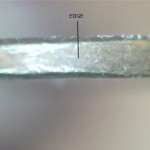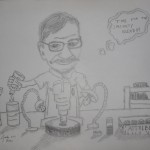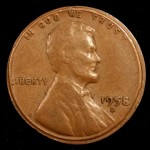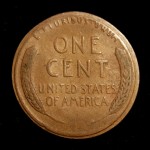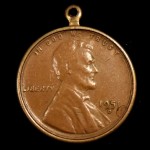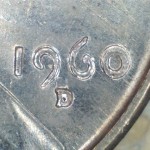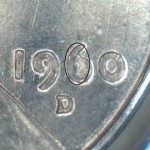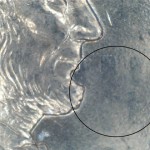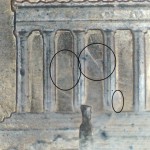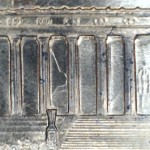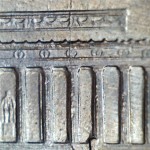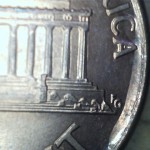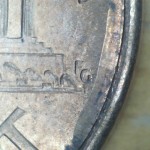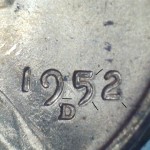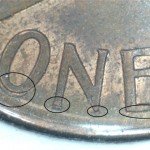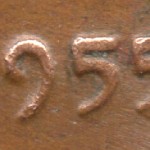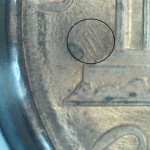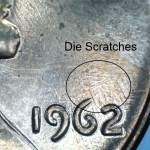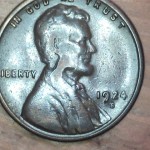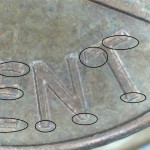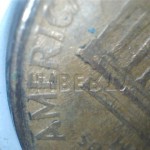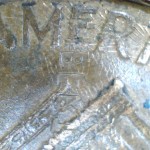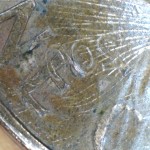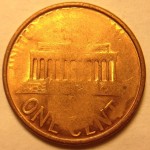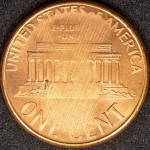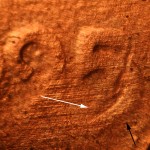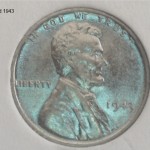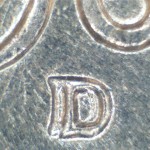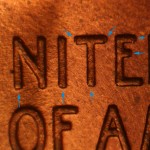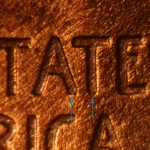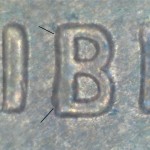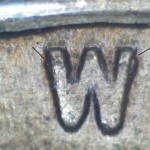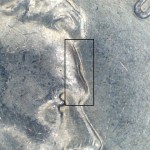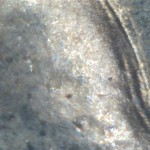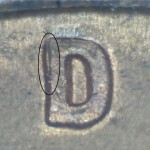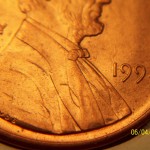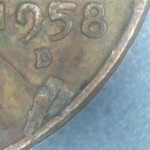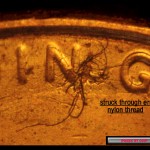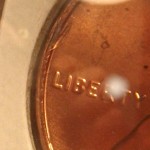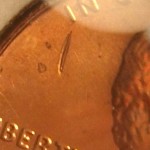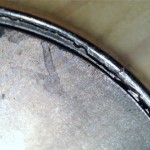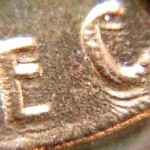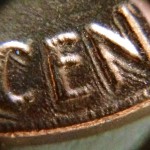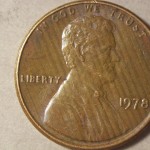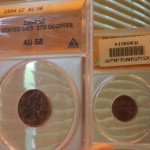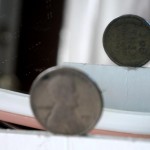A • B • C • D • E • F • G • H • I • J • K • L
M • N • O • P • Q-R • S • T • U • V • W • X-Z
Welcome to the Lincoln Cent Forum Glossary.
Use the alphabetical links above to navigate to the desired term.
This glossary of terms was written and compiled by Will Brooks with the help of our forum members. A huge thanks to everyone who contributed knowledge, ideas, words, and photos to make this growing educational resource possible. Special thanks to Richard Cooper, aka “Coop” who donated many of the photos.
Improper Alloy Mixture: During the copper alloy planchet era (pre-1982), there were instances of errors in the alloy mixture which resulted in planchets which show different ribbons of color in them, often resembling wood grain. These cents are often referred to as “wood-grain cents,” or “woodies.”

In God We Trust: Also referred to as the motto, these words appear on the top of the obverse on all Lincoln cents, as well as on other denominations.
Incuse: Devices or anomalies in negative relief or recessed into a die or coin surface. This is the opposite of raised.
Initials: The initials are the letters seen on coins that denote the designer or sculptor who made the coin’s design. On Lincoln cents, the initials may refer to:
VDB, for Victor David Brenner, the designer and sculptor of the Lincoln cent obverse design and the original wheat reverse. His initials VDB appeared at the bottom of the reverse on 1909 cents, but were removed part way through the year due to criticism of their prominence. The initials reappeared on the bust’s shoulder on the obverse in 1918, where they are still shown today.
FG, for Frank Gasparro,10th chief engraver of the United States mint from 1965 to 1981. Among other designs, he was the designer of the memorial reverse used on Lincoln cents from 1959 to 2008. His initials, FG, appear to the right of the bottom of the memorial building on the cents.
RM, for Richard Master, designer of Birth and Early Childhood in Kentucky reverse in 2009.
LC, for Jim Licaretz, sculptor of Birth and Early Childhood in Kentucky reverse in 2009.
CLV, for Charles L Vickers, designer and sculptor of the Formative Years in Indiana reverse used in 2009.
JI, for Joel Iskowitz, designer of the Professional Life in Illinois reverse used in 2009.
DE, for Don Everhart, sculptor of the Professional Life in Illinois reverse used in 2009.
SG, for Susan Gamble, designer of the Presidency in Washington D.C. reverse used in 2009.
JFM, for Joseph F. Menna, a renowned sculptor in both traditional and digital media, Menna was the first full-time digital artist employed by the U.S. Mint. Among many other designs, Menna was the sculptor for Susan Gamble’s 2009 Presidency in Washington D.C. reverse design for the Lincoln cent, as well as the sculptor for Lyndall Bass’ shield reverse design used on Lincoln cents from 2010 to the present.
LB, for Lyndall Bass, the artist who designed the Shield Reverse used on the Lincoln cent from 2010 until the present.
Inscription: An inscription on a coin is any of the written devices, including the motto and legend.
Interior Die Break: This is simply a very large die chip. Unfortunately, qualifying a die chip to be an interior die break can be confusing, since different experts list differing size parameters for qualification. Please visit cuds-on-coins.com for listings of interior die breaks. Image donated by copperlover.
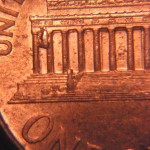
Inverse Die Installation: Initially, the common practice at the mint was to use the obverse die as the hammer die. However, in the 1990s, the mint began experimenting with using the reverse die as the hammer die. By the mid to late 90s, this inverse die installation became the predominant set-up used by the mint.
Inverted Mint Mark: A mint mark that was punched into the working die upside-down. The only known Lincoln cent example of an inverted mint mark is on a 1946S cent, which has an inverted ball serif S. Since a standard S looks essentially the same when it is rotated 180 degrees, one must become familiar with the differences in the font and the serifs in order to identify this variety. Image donated by BJ Neff.

Isolated Machine Doubling: This is simply machine doubling that manifests itself in only one small area or on a single device on a coin.
Issue Variety: Unlike die varieties, which differ from normal coins due to a problem creating the intended design on a working die (Doubled dies, re-punched mint marks, etc.), an issue variety is a coin that differs because of a change in the die design itself, such as transitional and wrong design varieties, mint mark design changes within a given year, small date/large date changes, etc. This term was introduced by Charles Daughtrey and I promote its use.
